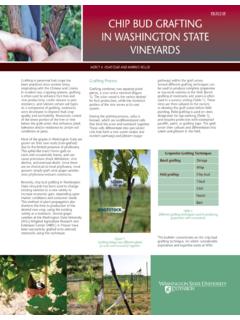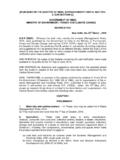Transcription of WHO Traditional Medicine Strategy 2 0 1 4 - 2 0 2 3
1 W H O T r a d i t i o n a l M e d i c i n e S t r a t e g y 2 0 1 4 - 2 0 2 32 0 1 4 - 2 0 2 3 WHO Traditional Medicine Strategy 2014- 2023 WHO Traditional Medicine Strategy WHO Library Cataloguing-in-Publication DataWHO Traditional Medicine Strategy : , Traditional . therapies. planning. of health care. policy. Health 978 92 4 150609 0 (NLM classification: WB 55) World Health Organization 2013 All rights reserved. Publications of the World Health Organization are available on the WHO web site( ) or can be purchased from WHO Press, World Health Organization, 20 Avenue Appia,1211 Geneva 27, Switzerland (tel.)
2 : +41 22 791 3264; fax: +41 22 791 4857; e-mail: Requests for permission to reproduce or translate WHO publications whether for sale or for non-commercial distribution should be addressed to WHO Press through the WHO web site ( ).The designations employed and the presentation of the material in this publication do not imply the expression of any opinion whatsoever on the part of the World Health Organization concerning the legal status of any country, territory, city or area or of its authorities, or concerning the delimitation of its frontiers or boundaries. Dotted lines on maps represent approximate border lines for which there may not yet be full agreement.
3 The mention of specific companies or of certain manufacturers products does not imply that they are endorsed or recommended by the World Health Organization in preference to others of a similar nature that are not mentioned. Errors and omissions excepted, the names of proprietary products are distinguished by initial capital reasonable precautions have been taken by the World Health Organization to verify the information contained in this publication. However, the published material is being distributed without warranty of any kind, either expressed or implied. The responsibility for the interpretation and use of the material lies with the reader.
4 In no event shall the World Health Organization be liable for damages arising from its use. Printed in Hong Kong SAR, China 3 WHO Traditional Medicine StrategyContentsAcknowledgements .. 5 Foreword ..7 Acronyms used in this document .. 9 Executive Summary .. 111. Introduction .. 152. Global progress .. Policy and regulations .. Practices .. Education and research .. 223. Global review of T&CM .. Continuing demand for T&CM products, practices and practitioners .. Use of T&CM .. Regulation of T&CM products, practices and practitioners.
5 Universal health coverage and integration of T&CM .. Opportunities and challenges .. 404. Strategic objectives, strategic directions and strategic actions .. Strategic objective 1: To build the knowledge base for active management of T&CM through appropriate national policies .. Strategic objective 2: To strengthen the quality assurance, safety, proper use and effectiveness of T&CM by regulating products, practices and practitioners.. Strategic objective 3: To promote universal health coverage by integrating T&CM services into health care service delivery and self-health care.
6 535. Implementing the Strategy .. 57 References .. 59 Annex A Selected examples of notable T&CM initiatives by region/country .. 63 Annex B Information on selected global T&CM professional organizations .. 68 Annex C Selected WHO publications on T&CM .. 705 WHO Traditional Medicine StrategyAcknowledgementsDuring the process of preparing this updated Strategy over the past two years, the draft version was sent for review and comment to Member States across the six WHO regions, 20 WHO Collaborating Centres for Traditional Medicine , 22 members of WHO s Expert Advisory Panel on Traditional Medicine , global professional organizations in the field of Traditional Medicine , in particular five NGOs which have built up official relationships or working relations with WHO.
7 And three related UN agencies World Intellectual Property Organization, World Trade Organization and Food and Agriculture Organization of the United Nations. It has also profited from their experience and expertise. Four technical working group meetings (TWG) were conducted to revise the draft. Invited experts and governmental representatives from six WHO regions participated in the TWG meetings. Regional Advisors for Traditional Medicine in the six WHO regions and relevant technical units or departments within WHO were consulted and supplied material.
8 Information from 129 countries reports and other sources supported the development of the Strategy . A. Burton, T. Falkenberg, M. Smith, Q. Zhang and X. Zhang were the members of the drafting group. Former directors of the WHO Department for Health Systems Policies and Workforce, T. Boerma and W. Lerberghe, provided guidance and inputs. The coordinator of the Traditional and Complementary Medicine Programme, Q. Zhang, undertook revision and editing. E. Asio and Y. Maruyama provided secretarial support. The government of the People s Republic of China kindly provided financial support for the development of the document.
9 The government of Hong Kong SAR, the People s Republic of China and WHO Collaborating Center for Traditional Medicine in Hong Kong provided technical, financial and logistical support for the meetings of three working groups, the development and the printing of the document. WHO gratefully acknowledges all the above-mentioned governments, institutions, organizations and experts. 7 WHO Traditional Medicine StrategyForewordAcross the world, Traditional Medicine (TM) is either the mainstay of health care delivery or serves as a complement to it. In some countries, Traditional Medicine or non-conventional Medicine may be termed complementary Medicine (CM).
10 The WHA resolution on Traditional Medicine ( ), adopted in 2009, requested the WHO Director-General to update the WHO Traditional Medicine Strategy 2002-2005, based on countries progress and current new challenges in the field of Traditional Medicine . The WHO Traditional Medicine Strategy 2014- 2023 thus reappraises and builds on the WHO Traditional Medicine Strategy 2002 2005, and sets out the course for TM and CM (T&CM) in the next decade. T&CM is an important and often underestimated part of health care. T&CM is found in almost every country in the world and the demand for its services is increasing.













